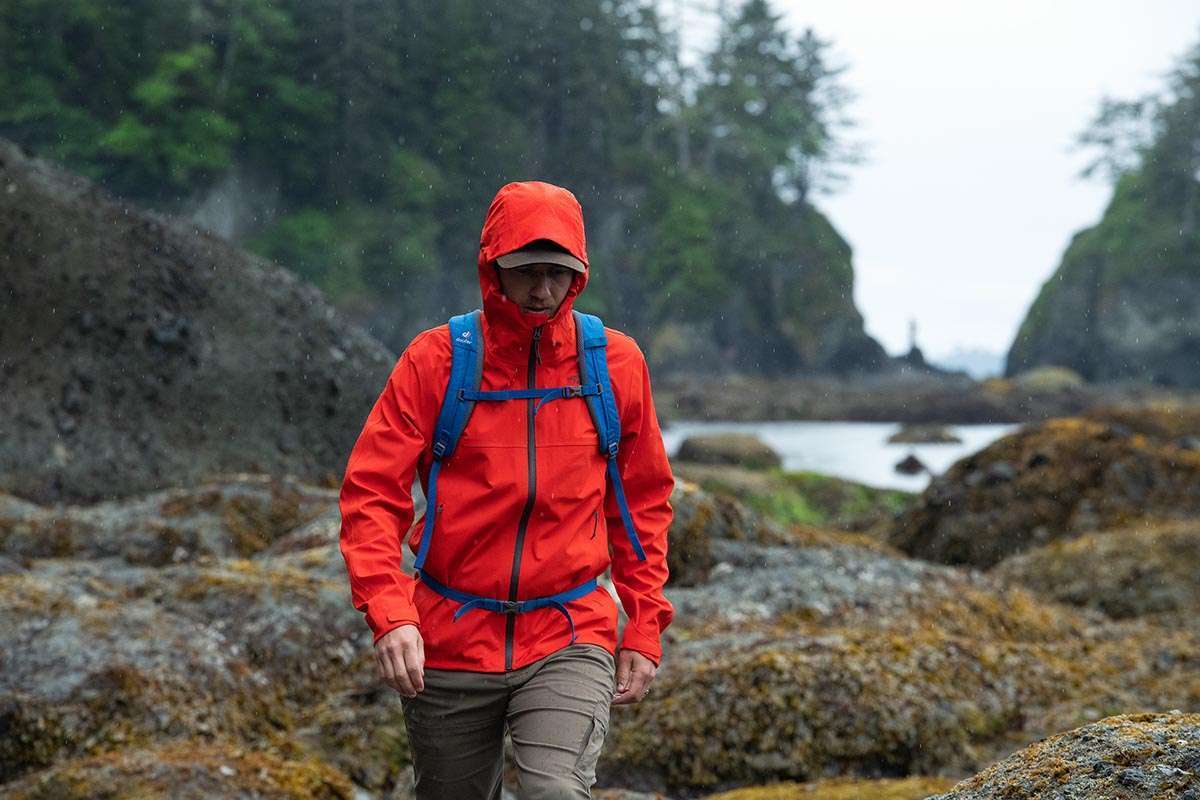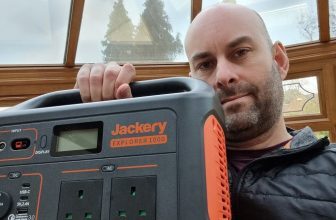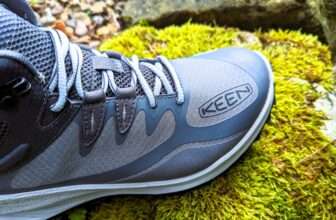
Back in the 1960s and 70s, outdoor gear wasn’t quite what it is today. If you wanted a waterproof jacket for hiking, your only real options were heavy rubber coats that made you sweat or waxed cotton that got stiff and crusty. Not so great when you’re out enjoying nature! But that all changed when a company called W. L. Gore & Associates started tinkering with a new fabric technology in the 1970s.
The Gore company was experimenting with a material called expanded polytetrafluoroethylene (ePTFE for short – don’t worry about remembering that mouthful!). They discovered this PTFE polymer could be made into a porous membrane with billions of tiny holes per square inch. And somehow, these small pores prevented liquid water drops from passing through but allowed water vapor molecules to escape. Magic!
This was a game changer – finally, a fabric that could repel rain and wetness and let your sweat and body heat escape simultaneously. Gore turned this high-tech membrane into a lining they called Gore-Tex. They partnered with outdoor apparel companies to put Gore-Tex fabric linings into jackets, gloves, shoes – you name it.
Suddenly, being outside in the elements didn’t mean being drenched. Gore-Tex led to lightweight but waterproof and breathable jackets, opening up new possibilities for more comfortable outdoor adventures. No surprise that Gore-Tex quickly took off in the 1970s and became a household name – the original high-performance technical fabric for the outdoors!

Contents
ToggleGore-Tex: How Does It Work?
Before Gore-Tex came onto the scene in the 1970s, outdoor enthusiasts had limited waterproof clothing and gear options. At the time, genuinely waterproof materials like rubber and plastics tended to be heavy, stiff and caused sweating due to lack of breathability. Meanwhile, natural materials like treated leather or waxed cotton provided better breathability but soaked through when exposed to heavy rain for prolonged periods. This left outdoor adventurers having to compromise between staying dry or staying comfortable. But that all changed with the invention of a revolutionary new synthetic fabric by W. L. Gore & Associates.
Gore’s founders, Bill and Vieve Gore, had set out in 1958 to find new uses for plastics and synthetics. By 1969, a Gore researcher named Bob Gore was experimenting with a fluoropolymer material called polytetrafluoroethylene (PTFE) – commonly known as Teflon. As an electrical insulator, PTFE was useful but considered a “dead polymer” with limited potential for further innovation. However, Bob Gore discovered that he could rapidly stretch PTFE into a porous, web-like structure of billions of tiny interconnected holes per square inch.
This process, which Gore dubbed “expanded” PTFE (ePTFE), created a matrix of air gaps that provided a micro-structure very different from the solid Teflon previously known. Test results showed that this expanded PTFE membrane allowed water vapor molecules to pass through while effectively blocking larger liquid water droplets. For the first time, there was a waterproof and breathable material. This serendipitous discovery launched the evolution of W. L. Gore into a company synonymous with high-performance fabrics.
Gore fabricated the ePTFE polymer into a thin, flexible membrane branded as Gore-Tex. Though initially a lining for wiring and cables, Bill Gore envisioned that the membrane’s waterproof/breathable abilities could revolutionize outdoor apparel. By 1976, Gore-Tex fabric was being sold to outdoor clothing manufacturers for use in jackets, gloves, and boots. Early adopters recognized that Gore-Tex finally provided a solution that kept the rain out while allowing sweat vapor to escape, providing unprecedented comfort and protection.
By the 1980s, Gore-Tex quickly became the gold standard waterproof, breathable fabric throughout the apparel industry. Its unique microporous structure gave Gore-Tex jackets superior wet weather performance compared to traditional rubber or treated materials. And it allowed innovative designs like lightweight biking pants, snowboarding jackets, and trail running shoes. For outdoor enthusiasts, Gore-Tex represented a quantum leap forward in having comfortable, high-tech apparel that enabled enjoying nature regardless of the elements.
Of course, early versions of Gore-Tex had some drawbacks. Garments needed to be meticulously sealed to prevent leaks, and some users complained of clamminess in humid conditions. But continual improvements in ePTFE membranes, face fabrics, and product designs have today made Gore-Tex synonymous with premium waterproof-breathable performance. There’s no denying that Gore’s invention of a porous expanded PTFE fabric revolutionized the outdoor apparel industry and set new expectations for comfort and protection. The story of high-tech fabrics starts with Gore recognizing the enormous potential in a polymer once considered somewhat dull and “dead.”
The Many Uses of Gore-Tex Fabric
So Gore invented this nifty Gore-Tex material – but what exactly did they do with it? Well, it didn’t take long for them to realize that a waterproof, breathable fabric had many potential uses in outdoor clothing.
One of the first and most apparent uses was for rain jackets and outerwear. Gore-Tex jackets and overtrousers became a top choice for hikers, climbers, and anyone who wanted to stay dry without sweat. The benefit was clear – jacket-wearing trailblazers stayed nice and comfortable even when the rain started pouring. No more soggy, miserable hikes!
Gore-Tex was also an excellent choice for winter gear and snow sports. Those tiny pores that kept water out also blocked the wind and retained body heat. Suddenly skiers and snowboarders could shred without freezing, thanks to breathable yet toasty Gore-Tex gloves, pants, and jackets. No wonder you’ll see Gore-Tex on the slopes to this day.
Footwear was another natural fit, especially once Gore fine-tuned the membranes for flexibility. Waterproof hiking boots and trail running shoes let outdoor athletes keep their feet dry through rain, mud, and river crossings. Gore-Tex soon became the ultimate materials upgrade from typical leaky leather boots.
And it didn’t stop with apparel. Gore-Tex got coated onto tent floors and canopies, keeping campers high and dry. It revolutionized gloves for anglers and kayakers. Luggage companies added it to duffel bags and backpack covers. Even military agencies used Gore-Tex in everything from sleeping bag inserts to bomb disposal suits.
Gore’s high-tech fabric exceeded their initial expectations. Today, the simple concept of a “waterproof breathable” membrane has enabled gear, clothing, and accessories for virtually every wet-weather outdoor activity. Not bad for a polymer they discovered by accident!
Types of Gore-Tex
There are a few main types or generations of Gore-Tex fabric technology:
- Original Gore-Tex – This is the earliest version, first introduced in 1976. It uses an ePTFE membrane bonded to a face fabric, often nylon. Provides basic waterproof breathability.
- Gore-Tex XCR – Introduced in the 1990s, XCR uses a thinner, lighter membrane for increased breathability and packability. Designed for aerobic activities. Durability is somewhat reduced.
- Gore-Tex Pro – Launched in 2007, the Pro has a burly 3-layer construction with a reinforced ePTFE membrane. Provides maximum weather protection and durability for rugged use. Less packable and more expensive.
- Gore-Tex Active – Released in 2014, Active emphasizes absolute breathability and next-to-skin comfort for high-energy pursuits. Uses a thin, softer membrane.
- Gore-Tex with Stretch – Added elastane to the face fabric to increase flexibility and comfort in motion. Allows 4-way stretching.
- Gore-Tex C-Knit – Uses a partial 3D textile bonded to the membrane for improved breathability and moisture management during high aerobic output.
- Gore-Tex Shakedry – A lightweight single-layer construction focused on being 100% waterproof yet still breathable for running or cycling.
The main factors differentiating the generations and types are weight, breathability, durability, stretch, and intended use. But they all rely on the signature ePTFE membrane for waterproofing.

Advantages of Gore-Tex Over Traditional Outdoor Fabrics
While waterproof fabrics existed before the invention of Gore-Tex, they possessed certain limitations that prevented optimal performance for outdoor use. The microporous ePTFE membrane at the heart of Gore-Tex provided several critical advantages over earlier natural and synthetic waterproof materials.
Weight Reduction
Traditional waterproof fabrics for outerwear include oilskin (leather treated with linseed oil), wax cotton (cotton impregnated with paraffin wax), and PVC (polyvinyl chloride plastic). However, these materials tend to be heavy and restrict mobility. For example, a PVC rain jacket may weigh over 3 pounds (1.4kg). Gore-Tex membranes, in contrast, add just a few ounces (~100g) to a garment’s weight. This allowed for lightweight, packable outdoor apparel.
Increased Breathability
Uncoated fabrics like wool are quite breathable but absorb moisture. Previous waterproof fabrics like rubber and PVC are impermeable to moisture. This traps sweat vapor and leads to interior condensation buildup. Gore-Tex’s microporous structure avoids this by allowing perspiration vapor to pass outward through the pores while blocking exterior liquid water. This provides significantly increased comfort compared to rubber rain gear.
Improved Insulative Properties
Materials like treated leather or waxed cotton lose their thermal insulation capacity when moisture is absorbed. In contrast, Gore-Tex maintains its insulation performance when exposed to rain and snow. The pores block liquid water, while the base material provides warmth. Gore-Tex enables jacket insulation equivalent to that of natural down, even in wet conditions.
Enhanced Durability
PVC, wax cotton, and other early waterproof materials have limited lifespans. They degrade due to chemical breakdown, abrasion, and repeated flexing. Gore-Tex exhibits much greater durability, with ePTFE membranes that resist chemical and environmental damage. Though not indestructible, Gore-Tex lasts significantly longer than previous options before needing replacement. This makes it a pragmatic investment, given the level of performance provided.
In summary, Gore-Tex’s optimized blend of waterproofing, breathability, weight, insulation, and durability exceeded the capabilities of earlier waterproof fabrics. This allowed it to become widely adopted as an advanced outdoor apparel and equipment solution.
Evolution of Technical Fabrics Beyond Gore-Tex
While Gore-Tex was a watershed innovation, it did not represent the endpoint for technical fabric development. Since the 1980s, numerous companies have produced their own proprietary waterproof-breathable (WPB) membranes and fabrics to improve upon and compete with Gore-Tex.
Gore Tex Alternatives
eVent
Introduced in 1999 by BHA Group, eVent uses a polyurethane membrane with tailored micropores to allow high levels of air permeability and moisture vapor transport. It is designed to be more breathable than Gore-Tex, making it popular for aerobic activities. However, the polyurethane material is less durable than ePTFE.
Pertex and Entrant
Pertex and Entrant rely on tightly woven nylon or polyester microfibers coated with a thin polyurethane layer. The porous coating provides water resistance, while the tight weave of the base layer enables moderate air and moisture flow. These are cheaper alternatives to Gore-Tex but are less breathable and prone to wetting out under pressure.
NeoShell
Polartec’s NeoShell incorporates a nylon layer with micro-pores coupled with a thin polyurethane coating to enhance airflow. The goal is to maximize breathability and reduce interior condensation. However, durability and long-term water resistance needs to be investigated.
Future Fibers and Membranes
Ongoing research is developing specialized fibers and pore structures tailored for enhanced moisture control. Examples include bi-component fibers that use wicking and absorption to move moisture or Konvexal membranes with cone-shaped pores for rapid ventilation. As materials science advances, the capabilities of waterproof-breathable fabrics continue to improve.
While Gore-Tex maintains market dominance, it is no longer the only viable technical option. The outdoor industry now has a range of proprietary waterproof-breathable materials to select from based on the desired blend of performance, cost, and durability. Gore-Tex established the concept of engineered pores for weather protection and breathability. Ongoing innovation is focused on refinement as others try to surpass or differentiate from Gore’s iconic brand.
Pertex Shield vs Gore Tex
Here is a comparison of Pertex Shield and Gore-Tex waterproof fabrics:
Pertex Shield
- Developed by Pertex, a British company that manufactures waterproof fabrics.
- Uses a polyurethane membrane laminated to the inside of the outer fabric to provide waterproofness. The membrane has microscopic pores that are small enough to prevent liquid water from penetrating, but allow water vapor (perspiration) to escape.
- Typically lighter weight and more packable than Gore-Tex. Better for lightweight jackets and gear where weight is a main concern.
- Durable water repellent (DWR) treatment applied to the outer face fabric causes water to bead up and roll off. This outer layer is prone to wearing off over time.
- Less expensive than Gore-Tex.
- Can feel clammy next to skin in humid environments since it is not as breathable as Gore-Tex.
Gore-Tex
- Developed and manufactured by W.L. Gore & Associates. The market leader in waterproof/breathable fabrics.
- Uses an expanded polytetrafluoroethylene (ePTFE) membrane with over 1.4 billion pores per square inch. This provides excellent waterproofness while allowing perspiration vapor to pass through.
- Extremely breathable and less likely to feel clammy compared to Pertex Shield.
- More durable and will maintain effectiveness longer than Pertex Shield.
- Heavier and less packable than Pertex Shield. Not ideal for ultralight gear.
- More expensive than Pertex Shield. Generally used for premium jackets and gear.
- Requires periodic reapplication of a DWR treatment to maintain water repellency.
In summary, Pertex Shield is lighter, less expensive, but less breathable and durable. Gore-Tex is more breathable, durable and higher performing, but heavier and more costly. Choice depends on intended use and budget.
Conclusion
Gore-Tex represented a breakthrough that fundamentally transformed outdoor fabrics and apparel. The serendipitous discovery of expanded PTFE led to the first membrane that delivered a robust combination of waterproofing and breathability. This enabled lightweight, comfortable protection from the elements for a wide range of outdoor activities.
The microporous ePTFE membrane opened new possibilities for garment designs and technologies that enhanced performance while keeping users dry. Gore-Tex quickly became the standard fallback for premium waterproof-breathable fabrics after its introduction in the 1970s. It retained dominance even as competitors introduced newer technical fabrics to improve Gore’s formula.
While newer ePTFE iterations and alternative fabrics have gradually evolved, Gore-Tex remains a market leader. It set the bar for what defines quality waterproof-breathable gear.
For the average consumer, the Gore-Tex brand still carries an aura of high-end innovation and reliability. The story of Gore-Tex illustrates how advancements in materials science can revolutionize an entire product category. And how one serendipitous discovery can spawn an ongoing evolution in technical fabrics that enable more comfort and safety for outdoor adventurers.

















